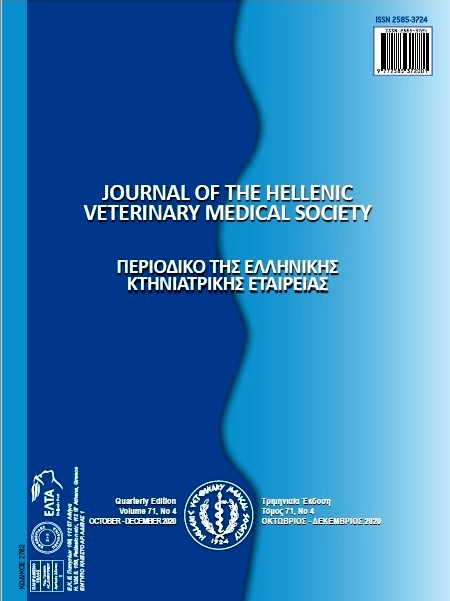Treatment of Ventral Hip Luxation in a Puppy
Resumen
A Three months of age, 4.5 kg, female mixed (cross) breed presented to our clinic with complaint of the left hind leg lameness. In the clinical, radiographic and ultrasonographic examination, ventral hip luxation was diagnosed. Based on the examination findings which indicated the case was chronic, surgical treatment was decided. Hip joint was exposed firstly by craniodorsal approach. Flattened and full acetabulum, fractured greater trochanter, ruptured gluteal muscle attachment and irreparably broken joint capsule were determined. Excision arthroplasty was performed by ventral approach. Greater Trochanter was attached to its position by an L shape Steinman pin using craniodorsal approach. Then, a drill hole was created on the greater trochanter, and a screw was inserted to dorsal acetabular rim. A synthetic suture passed through the hole was tied to the screw in a figure of eight mode. Postoperative antibiotics and anti-inflammatory drugs were used. Physiotherapy such as swimming and massage treatments was proposed following skin sutures removal. In the 4th week control postoperatively, the dog began to use the operated leg effectively despite the moderate quadriceps’ contracture. The contracture was mostly resolved 12th week by continuing physiotherapy.
Article Details
- Cómo citar
-
BOZKAN, Z., BULUT, B., & BELLEK, C. G. (2021). Treatment of Ventral Hip Luxation in a Puppy. Journal of the Hellenic Veterinary Medical Society, 71(4), 2577–2582. https://doi.org/10.12681/jhvms.25944
- Número
- Vol. 71 Núm. 4 (2020)
- Sección
- Case Report

Esta obra está bajo una licencia internacional Creative Commons Atribución-NoComercial 4.0.
Authors who publish with this journal agree to the following terms:
· Authors retain copyright and grant the journal right of first publication with the work simultaneously licensed under a Creative Commons Attribution Non-Commercial License that allows others to share the work with an acknowledgement of the work's authorship and initial publication in this journal.
· Authors are able to enter into separate, additional contractual arrangements for the non-exclusive distribution of the journal's published version of the work (e.g. post it to an institutional repository or publish it in a book), with an acknowledgement of its initial publication in this journal.
· Authors are permitted and encouraged to post their work online (preferably in institutional repositories or on their website) prior to and during the submission process, as it can lead to productive exchanges, as well as earlier and greater citation of published work.



